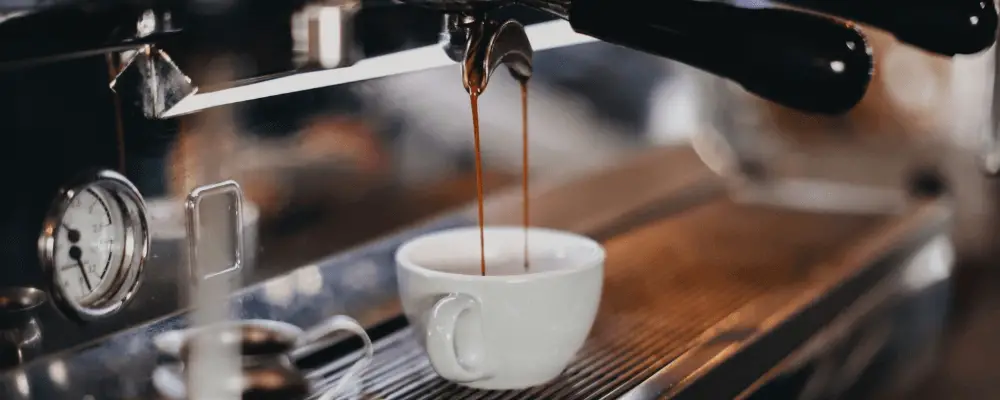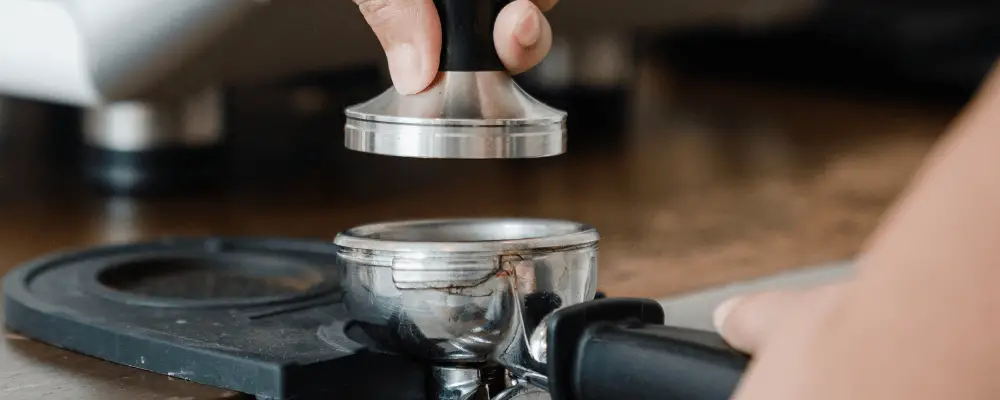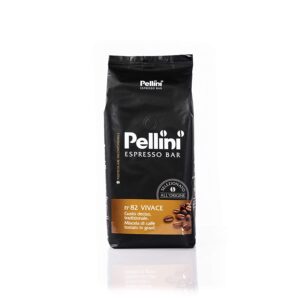
Espresso channeling will ruin the taste of your coffee, which is why early detection and intervention are critical.
Almost anyone with an espresso machine has experienced this problem, and it’s never a pleasing experience. This article provides detailed information about espresso channeling, its remedies, and practical prevention tips.
What is Espresso Channeling?
Although espresso channeling is a common occurrence, it’s often hard to avoid it, especially if you don’t know its cause and various prevention methods.
Espresso channeling describes the process where pressurized water finds its way through coffee rather than flowing evenly via the whole bed, leading to under extraction, bitter crema, and weak flavorless shots.
In a more straightforward explanation, channeling occurs when the water that usually puts even weight to the coffee puck and pulls out flavors quickly finds its way to a gap, or a crack in the puck, causing weaker shots without flavor.
It’s often easy to miss channeling shots if you’re not keen enough.
Usually, coffee prepared by channeling espressos may taste differently depending on the channeling severity.
A good espresso coffee depends entirely on three well-balanced variables, that is ground coffee, time, and pressure.
Misjudging even on these components results in sub-optimal espresso coffee.
On the downside, there are no techniques and equipment you can use before executing the shot that can warrant accurate variables, but there are some procedures you can undertake to determine if they’re fully utilized.
These processes include:
- Checking the coffee puck when you finish extraction.
- Seeing the espresso’s shot color.
- Flow, and time.
- Gauging the coffee volume’s output and input.
- Most importantly, tasting the coffee.
Want to know more about espresso! Find out everything about pulling the perfect shot here!
How to Stop Espresso Channeling?
If you want to make the best espresso coffee, preventing channeling is essential. While it’s easy for your espresso to have this effect, there are several things you can do to fix it or avoid it.
Some of the espresso channeling fixes are:
Making sure the portafilter is dry.
Using a damp basket usually causes pressurized water to sink on the basket’s edge leading to an uneven application through it.
Ensuring to use the right amount of coffee.
Overfilling the coffee basket usually leads to over-extraction and dirtying of the gasket, even if you’re using an even surface and coffee ground. Also, using a less coffee dose usually leaves an enormous gap on the coffee basket, which may highly cause channeling.
Avoiding tapping on the sides of the portafilter.
You should not tap the tamper on the sides because it may cause cracks that can easily allow water flow. Most people usually tap the portafilter sides to even out the coffee ground.
While this approach might seem okay to you, it risks the grinds breaking from the basket’s edge, which will definitely cause channeling.
Using enough and even pressure during tamping.
Applying excess on one pressure on one side on than the other may lead to water flowing on the weaker part.
Avoiding knock the filter holder to avoid fracturing the puck.
It’s the filter that will help you know whether your espresso is channeling.
Wetting your espresso machine first.
Running some water through the machine warms it up and cleans the pipes of any residue. The low pressure usually enhances the extraction process of coffee.
Getting the coffee grind size right.
Use fine coffee ground to avoid particles migration and accumulating at the bottom, thus preventing obstruction of water flow.
If you need to see what the grind should look like, check out our coffee grind size guide.

Causes for Espresso Channeling
Espresso channeling can occur for various reasons, many of which we do without even realizing. Once you master the different reasons your espresso is channeling, you will even be surprised how minor and trivial some of them are.
The leading six causes of espresso channeling include:
- Uneven grounded coffee. This usually causes a rough coffee surface, hence leading to varying water pressure application. It also causes the interlocking of coffee grinds.
- Putting less or too much coffee on the coffee basket.
- A wet puck.
- Uneven tamp.
- Knocking the portafilter sides.
- Applying less pressure during tamping.
How to Avoid Espresso Channeling in the Future?
You can avoid espresso channeling by following few simple basic procedures.
Most of these processes are easy to ignore and usually seem normal until your produce the work espresso coffee and wish you had followed them before you started.
Some of these tips include:
1. Avoid using a blocked filter basket. It usually causes an irregular flow of water.
2. Always be focused during espresso making to avoid knocking the filter holder. Hitting it can cause the coffee puck to crack.
3. Utilize automatic or manual tampers and use sufficient pressure during tamping to create the most suitable resistance for even water flow and extraction.
4. Utilize a distributor to make a well-leveled puck for even pressing.
5. Distribute the coffee grounds evenly when in the filter. It’s often easy to ignore this part, but it has a high ability to make your espresso coffee even tastier.
6. Use the right coffee dose. Using a less amount enhances channeling because the puck’s particle size is coarser, leaving big gaps between the screen and shower.
7. Always remember to remove the previous shot’s wet puck, clean it, and use it after it has completely dried when making another coffee dose.
8. Invest in a high-quality coffee grinder for finer and even coffee grounds.
Summary
Espresso is among the best in one of the best and appealing types of coffee in the world.
However, espresso channeling can make it boring and the most terrible beverage you can ever taste, especially when the channeling is alarming.
Espresso channeling usually results in less-viscous, unflavoured, and unappealing espresso coffee.
It’s best to take appropriate measures to prevent your producing such espressos.
Stopping channeling between the espresso-making process is usually impossible.
Therefore, you’d want to take espresso prevention measures before preparing your espresso.
Some of the effective measures are:
- Using less coarse coffee.
- Proper coffee dosages.
- Avoid hitting the holder.
- Tapping the portafilter.
Other ways include prewetting the machine, applying even and sufficient pressure during tamping, using a leveler, and using a well-dried and clean coffee puck.
I’ve always seen coffee as a way of bringing people together. Everywhere I go people seem to enjoy a fresh cup of coffee and that’s what drives my passion. There’s always a new brew to master, and there’s always a new face to enjoy it with. Hitch a ride with me on a coffee-fueled adventure to find a perfect cup.


